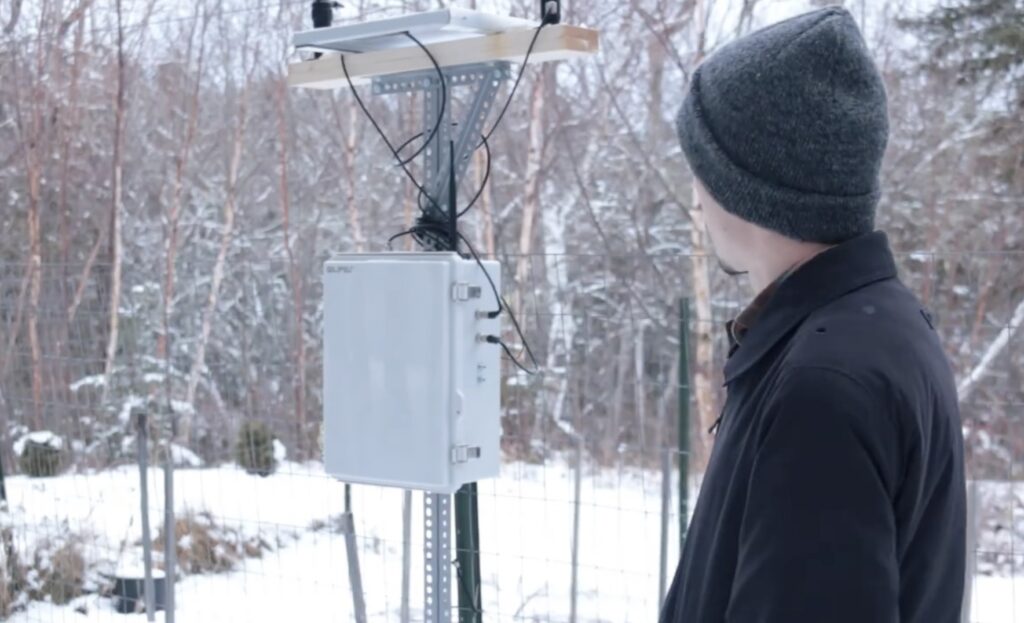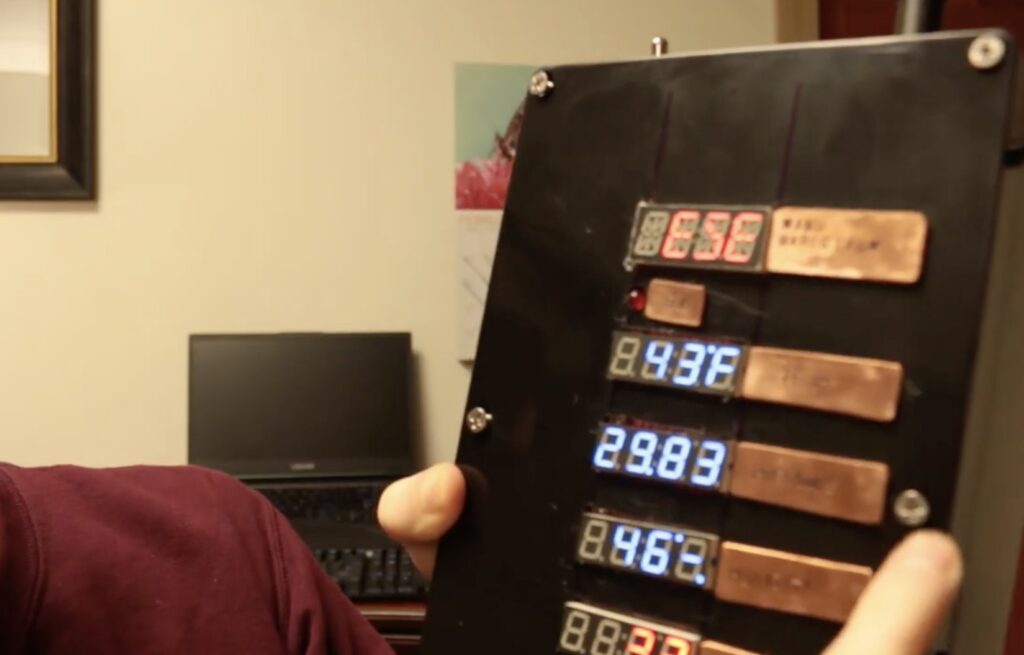A DIY weather display with dedicated outdoor sensor station

Weather stations are popular projects in the maker community because they’re useful and usually quite affordable to construct. But most that we see are really weather information displays that gather data through the internet from stations in the region. That data is fairly accurate, but there can be minor differences due to microclimate zones. So, Wilson Malone decided to build his own system with a dedicated outdoor sensor station.
Malone’s system consists of two units: the indoor display and the outdoor sensor station. The latter receives its power from a solar panel and battery backup, so Malone can place it anywhere that gets good sunlight within wireless range of his home. It has a sensor to detect wind speed, another sensor to detect wind direction, and a PHT (pressure, humidity, temperature) combination sensor. An Arduino UNO Rev3 board reads those sensors and then transmits the data using a 915MHz radio transceiver.

Inside the home, the indoor display unit receives that data with a radio transceiver of its own. An Arduino UNO R4 WiFi parses that and then shows each value on a four-digit seven-segment display. The Arduino will also publish the values to a self-hosted webpage every eight seconds. Any users on the same local network can visit that page to view the current information.
Now Malone has a hyperlocal weather station that gives him accurate information about the conditions in his exact location.